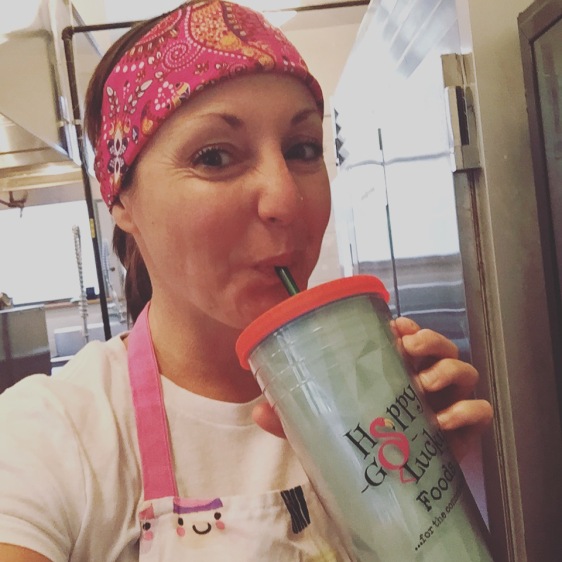Happy Spring, everyone! I hope you’re all having lots of organic gardening successes and very few failures this season. But, if you’ve had one or two boo boos, I hope you’re writing them down as to not repeat them next year. I talk from experience, and I’ve certainly had my share of wretched mistakes. Occasionally, I’m stubborn (*wink wink*). But I’m growing as a gardener, steward of our planet, and as a rational human being. Learning from past failure is the reason for this post. Truthfully, I was afraid to write about this too soon. There was no way I’d jinx our success. But it happened, everyone, it finally happened. Houston, we have cucumbers…two kinds!

This is a truly momentous occasion.
The Cross-Country Hybrids and Poinsett 76 cucumbers started out like any other: little, teeny tiny, cukes with unpollinated flowers at the end.

Isn’t it cute?
We were excited. But we knew, oh, we knew, not to get too excited. You see, we’ve tried this three years in a row at different times of the year, different gardening seasons, and different locations in our gardens. Every time (except for the one freak-volunteer-plant-in-January incident), we get both pickleworm and melonworm plus a lovely case of downy mildew. And this time was looking to be no different.

See the little jerks? Pickleworms were already invading.
But, as several people have told me to do, I finally broke down and got some Bacillus Thuringiensis (BT). And it’s my hero, my knight in shining armor, and my bestest buddy. BT a soil-dwelling bacteria that kills the worm larvae that make growing anything in the curcurbita family nearly impossible in our region. From squash to melons to cucumbers, it’ll work. And it’s OK for organic gardening, safe to beneficial insects (including bees), humans, and other animals. The one drawback that I see is that it degrades in sunlight and has to be reapplied often. It’s time consuming, but it’s saved our cucumber crops.

Cucumber Vines Basking in the Florida Sunshine
To treat, I spray all areas of the plants, but I especially focus on the new growth and flowers because that’s where we’ve found the most damage in the past. The pickleworm and melonworm moths lay their eggs around sundown and are active for only a few hours, but they lay enough eggs that hatch enough larvae to really cause some serious damage. Most of the time, the damage is so bad by the time it’s noticed that there’s no solution other than to rip out and discard the infested plants. I’ve literally cried over this. But not this year (not yet, anyway).

Cross-Country Hybrid Cucumber
We’ve been harvesting quite a few perfectly shaped, sweet as sugar cukes a couple times a week. It almost seems too good to be true. I’ll bask in this glory for as long as I can. I’ll show off my cucumbers to my fellow vendors at the farmers market, and bite into one every single day. So, friends, the moral of this little story is to stop being stubborn. Don’t repeat the same mistakes season after season, and don’t give up! Listen to the seasoned gardeners around you and take their advice. And enjoy the fruits (and veggies) of your labor.
With dirty fingernails and an armful of cucumbers,
Jenna


























